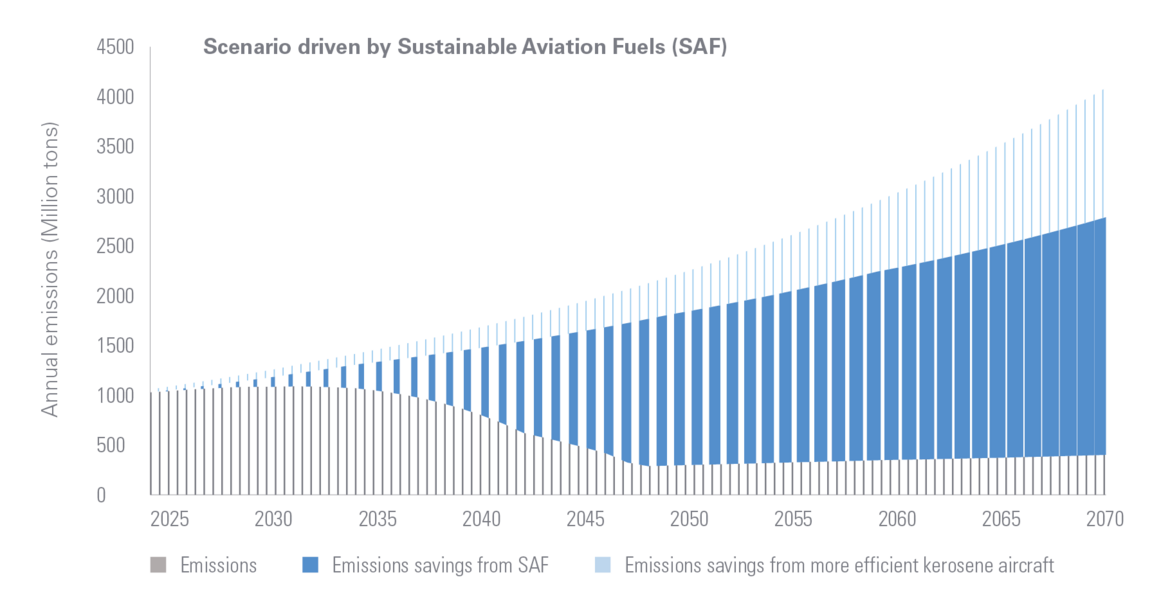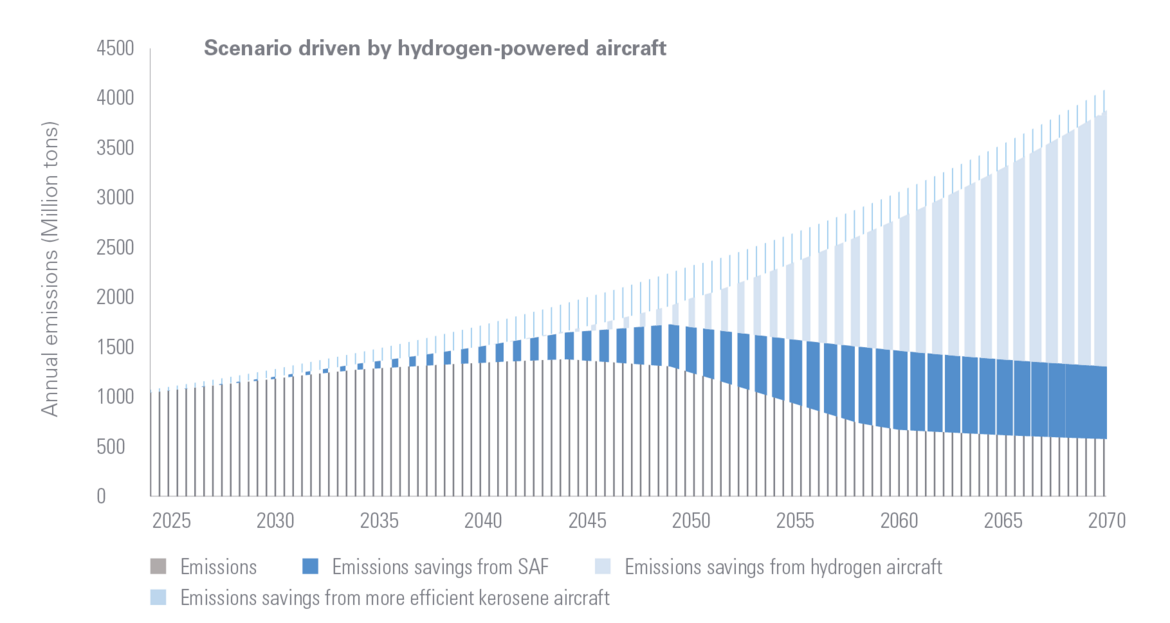Over the past three decades, technical and operational improvements have helped aviation to drastically reduce CO2 emissions per passenger-kilometre. However, growth projections show that following this trend of incremental improvements will not allow the aviation industry to decarbonise by 2050. The “hard-to-abate” nature of aviation’s emissions stems from the lack of sufficiently mature and affordable decarbonisation technologies, of infrastructure required to support these technologies, of investments in these technologies and associated infrastructure, and of certitude that should emerge from policy actions.
To help stakeholders tackle various uncertainties, such as timelines to mature technologies for hydrogen aircraft, the supply of Sustainable Aviation Fuels (SAF) or the impact of different regulations, Bauhaus Luftfahrt began developing a scenario tool to project possible transition pathways that aviation can take, in late 2022.
Today, the “Airline Decarbonisation model” allows us to design scenarios by shaping the evolution of different aircraft technologies and the availability of SAF and liquid hydrogen, and by imposing various policies (such as ReFuelEU). The projections are tracked using key performance indicators related to decarbonisation and the evolution of direct operating costs. Through the projections, we are able to observe the impact of various policies and how the role of SAF and advanced aircraft may vary in different contexts.
We present three cornerstone pathways generated using the Airline Decarbonisation model.
The Pathway driven by Sustainable Aviation Fuels (SAF)

In the first scenario, sustainable aviation fuels capture the lion’s share of block energy; and hydrogen-powered aircraft are never
introduced. SAF’s contribution is supplemented by cleaner conventional aircraft, which are introduced between 2030 and 2035 for different market segments, and are at least 15 % more efficient. Through a significant ramp-up of SAF production (17 % Compound Annual Growth Rate (CAGR) between 2020 and 2050), especially of power-to-liquid fuels based on direct-air-capture technology, we see that aviation comes close to decarbonising by around 2050. The residual emissions stem from the production and transport of these fuels, which will have to be offset through market mechanisms.
The Pathway driven by radical efficient aircraft combined with SAF

What if we combine the significant amounts of SAF from the preceding scenario with revolutionary kerosene-based aircraft types? In this second scenario, we introduce new aircraft concepts that offer significant improvements in fuel-burn efficiency of around 50 %, being introduced between 2040 and 2045. Projections from our model show that this combination offers some advantages over relying only on SAF. Decarbonisation can be achieved slightly faster, with slightly lower cumulative emissions. With lower SAF consumption (-5 % in 2050 and -15 % in 2070 in comparison to the preceding scenario), this scenario results in not just lower fuel costs, but also lower residual scope 3 emissions.
The Pathway driven by hydrogen-powered aircraft

In this third scenario, we consider an aggressive introduction of hydrogen aircraft for different market segments between 2040 and 2050. SAF supply grows at a relatively moderate CAGR of 9 % between 2030 and 2070. Projections for this scenario demonstrate that aviation does not decarbonise by 2070. This is the case even if scope 3 emissions from the production and transport of SAF and liquid hydrogen are completely offset. However, supplementary projections show that when this scenario is complemented with a higher retirement rate for kerosene aircraft, decarbonisation can be achieved in 2070.
The common thread for achieving decarbonisation in the scenarios is the substantial need for offsetting scope 3 emissions (largely resulting from fuel production). In fact, these emissions range from 300 to 400 million tonnes between 2050 and 2070 in the SAF-led decarbonisation scenario. This emphasises the importance of the production chain for SAF and liquid hydrogen for the pathway towards decarbonisation.
